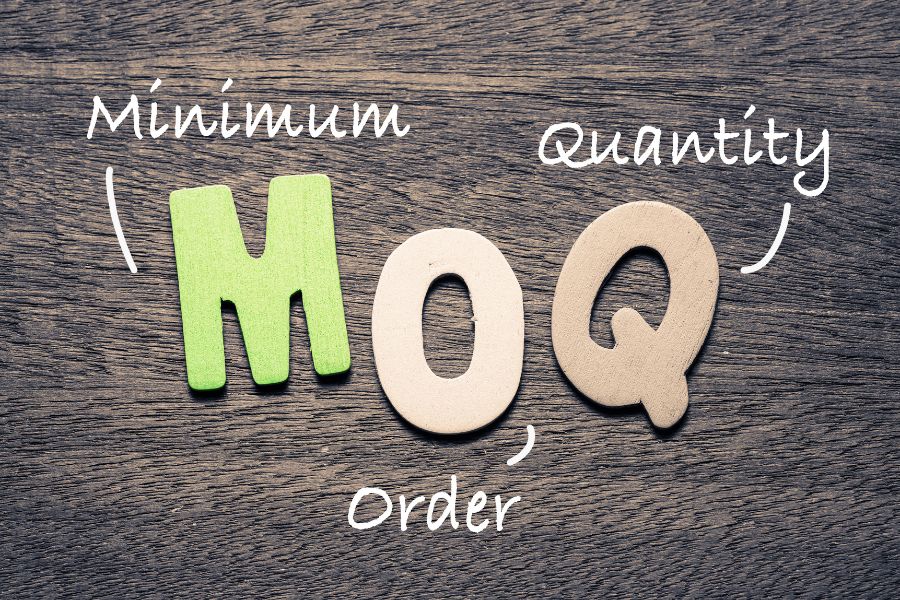What Does MOQ Mean? Understanding Minimum Order Quantity in Business
сентября 5, 2024 13:39 - no comments yet | No one following this article yet.
In the world of business, especially in manufacturing, e-commerce, and wholesale trade, the acronym MOQ is frequently used. But what does MOQ mean, and why is it important? MOQ stands for Minimum Order Quantity, which refers to the smallest number of units a supplier is willing to sell at a given time. This concept plays a crucial role in inventory management, production processes, and pricing strategies.
1. What is MOQ?
Minimum Order Quantity (MOQ) is a business term that indicates the least number of products that a buyer can purchase from a supplier in a single order. Suppliers set MOQs to ensure that they meet their cost-efficiency thresholds when producing or distributing goods. The MOQ may vary depending on the product, industry, and supplier.
For instance, a manufacturer producing custom T-shirts may have an MOQ of 100 units. This means that a buyer must order at least 100 T-shirts for the manufacturer to accept and fulfill the order.
2. Why Do Suppliers Set MOQs?
MOQs are often necessary for suppliers for the following reasons:
- Cost Efficiency: Producing or sourcing goods in larger quantities helps suppliers reduce costs. Raw materials can be purchased in bulk at lower prices, and production processes can be streamlined when the order volume is high enough to justify it.
- Managing Resources: Setting a minimum threshold allows suppliers to allocate their resources (labor, time, and machinery) effectively without incurring losses on smaller, less profitable orders.
- Covering Overhead Costs: Suppliers have overhead costs such as machinery maintenance, warehousing, labor, and utilities. By ensuring a minimum order, they can cover these fixed costs more easily.
3. How is MOQ Calculated?
Suppliers usually calculate MOQ based on several factors, including:
- Production Costs: They consider the total costs involved in production, such as material, labor, and machinery.
- Packaging and Shipping: Shipping costs are reduced when products are shipped in bulk. Suppliers factor this into their MOQ to ensure they can offer competitive pricing.
- Profit Margins: MOQs help suppliers ensure that each order provides a sufficient profit margin. Low-volume orders might not be profitable due to the high costs involved in production and distribution.
4. Advantages and Disadvantages of MOQ for Buyers and Sellers
For Buyers
-
Advantages:
- Cost Savings: Buying in larger quantities often allows buyers to receive discounts or better pricing.
- Consistent Supply: With larger orders, buyers can ensure a steady supply of goods, reducing the need for frequent reorders.
-
Disadvantages:
- Higher Upfront Costs: Meeting a supplier’s MOQ might require a significant upfront investment, which could be a challenge for smaller businesses or startups.
- Risk of Overstocking: Purchasing a large number of goods to meet the MOQ could lead to excess inventory, particularly if demand is lower than expected.
For Sellers (Suppliers)
-
Advantages:
- Increased Efficiency: MOQs allow sellers to optimize their production and shipping processes, leading to cost efficiency.
- Stable Revenue: Sellers can ensure that they cover their production and overhead costs with each order, reducing financial risks.
-
Disadvantages:
- Reduced Customer Base: High MOQs might deter small businesses or individual buyers who can’t afford to place large orders.
- Potential Inventory Issues: If a supplier sets a high MOQ and the buyer’s demand is low, it may lead to delays in selling off their inventory.
5. How to Navigate MOQs as a Buyer
If you are a buyer, there are a few strategies to manage MOQs effectively:
- Negotiate with Suppliers: Some suppliers may be willing to lower their MOQ, especially if you have a long-term business relationship or can demonstrate future growth potential.
- Group Buying: Partnering with other businesses to place a larger, combined order can help you meet MOQ requirements without overextending yourself financially.
- Choose Smaller Suppliers: Some smaller manufacturers or wholesalers may offer lower MOQs, which can be more feasible for small businesses.
- Test Orders: In some cases, suppliers may allow buyers to place smaller test orders before committing to larger MOQ purchases. This is common with newer suppliers who want to establish trust.
6. Conclusion
MOQ is a vital concept in supply chain management, ensuring that suppliers can run profitable businesses while providing buyers with the opportunity to purchase goods at competitive prices. By understanding how MOQs work and how to navigate them, businesses can make informed purchasing decisions and optimize their supply chain operations.
Whether you are a buyer or a supplier, understanding MOQ helps you strike a balance between cost-efficiency and maintaining the right level of inventory to meet market demand.
0no comments yet
Please type the two words below